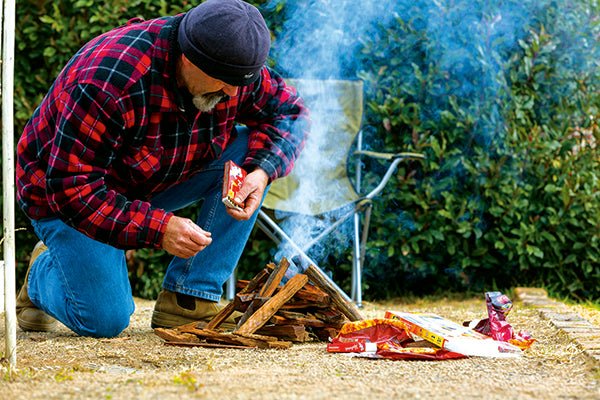
7 Things to Look For When Buying Firewood
|
|
Time to read 2 min
|
|
Time to read 2 min
We've all been there— you're loaded up for that overdue weekend away, the rig is prepped, camper-trailer hooked up, bikes are on the roof and the kids are about to launch into their first chorus of, "are we there yet?". There's only one thing left to do before leaving town and hitting the open road—stock up with fuel and firewood.
You finally reach your favourite campsite just on dusk and are looking forward to a well-earned beer around the campfire, only to discover that what's in the bag of firewood is so green Satan himself couldn't set fire to it.
Well, as it turns out, we've stumbled across some inside information that will put you ahead of the game next time you buy service station firewood. We've got a mate who knows a bloke who works at a packaged firewood processing plant, and he's tipped us off to a few simple things to look for that lessen the chance of picking up a dodgy, noncombustible bag.
WHAT TO LOOK FOR
1. Packaged firewood is sold by weight not volume. Look for bags that appear to be over-filled to the point where it looks like the bloke who packed it had trouble getting the staples in. This means the wood was light when packed. Light wood is dry wood. Short bags with a lot of folds at the staples are a risky purchase as heavy servo wood is more likely to contain moisture than premium quality iron bark. Buying a short bag is a gamble that may or may not pay off.
2. Try to buy from a near empty cage if possible. The big chains are stocked up regularly especially in the colder months. This means that the bags at the bottom and far corners of the cage have most likely been there the longest. These are the ones you should be focused on.
3. Look for bags with faded packaging. This is a sign that the wood has been packed for a long time and is well-seasoned. Even better, look for those bags at the bottom that are so weathered the bag is literally falling apart. This stuff is campfire gold! Grab it—even if you have to load it into the car piece-by-piece.
4. Don't overlook the smaller independent service stations. They usually charge a little more than the bigger chains which often means their turnover is lower and their stock has been there longer. You are more likely to tick all the boxes at an independent service station.
5. Try to stock up on firewood prior to a long weekend or public holiday where demand and stock turnover is at its highest. This is particularly important when buying kindling. A week can make a big difference to a bag of kindling.
6. When buying kindling look through the side of the bag (most kindling bags are see-through). It should be cut thin not chunky. The machines that produce kindling are hydraulically driven and the size of the cut can change throughout the shift.
7. Even after following all of the above, if you still get a dud bag don't leave it behind. Take it back to where you bought it and get a credit. Service stations will refund your money or replace it if you are dissatisfied. Although this is cold comfort, pardon the pun, it is better than wasting your money. Alternatively you could keep it for your next trip. It will be well-seasoned by then.
While these tips won't guarantee that you'll nail it with a roaring campfire each and every time, following these simple guidelines will greatly reduce the risk of a cold night around a smoking, sizzling flicker that does little more than consume your entire stock of firelighters.